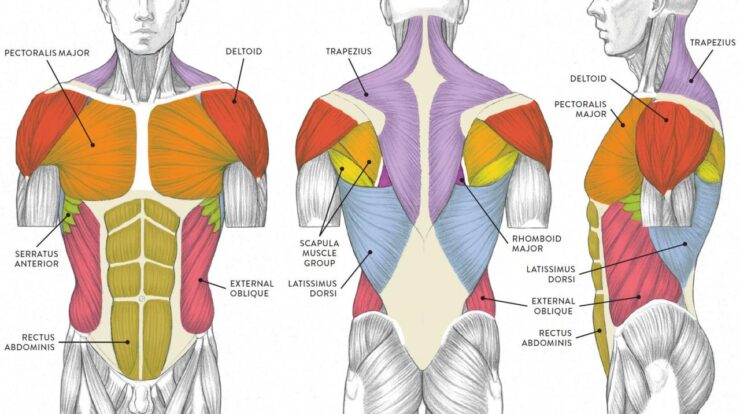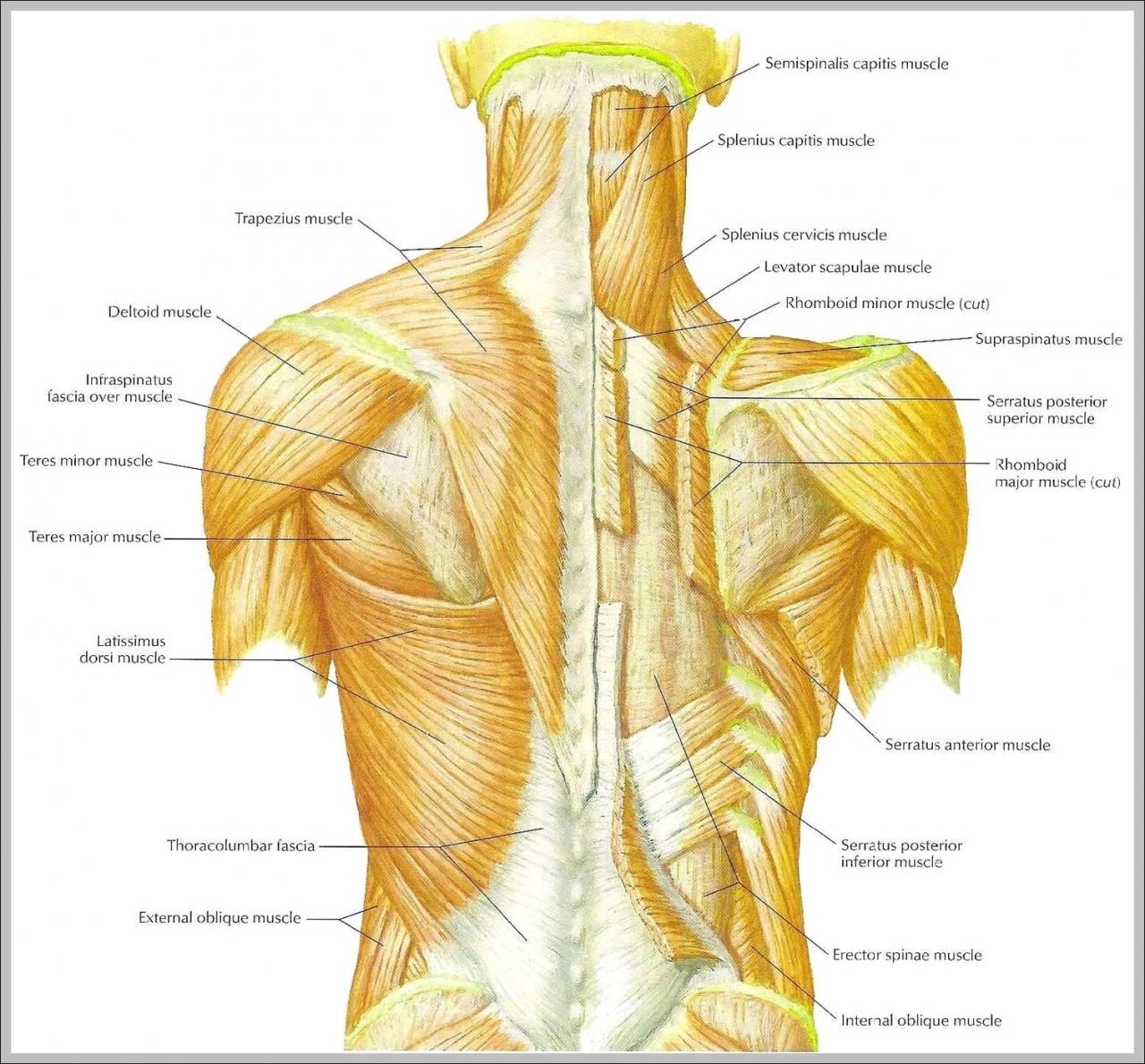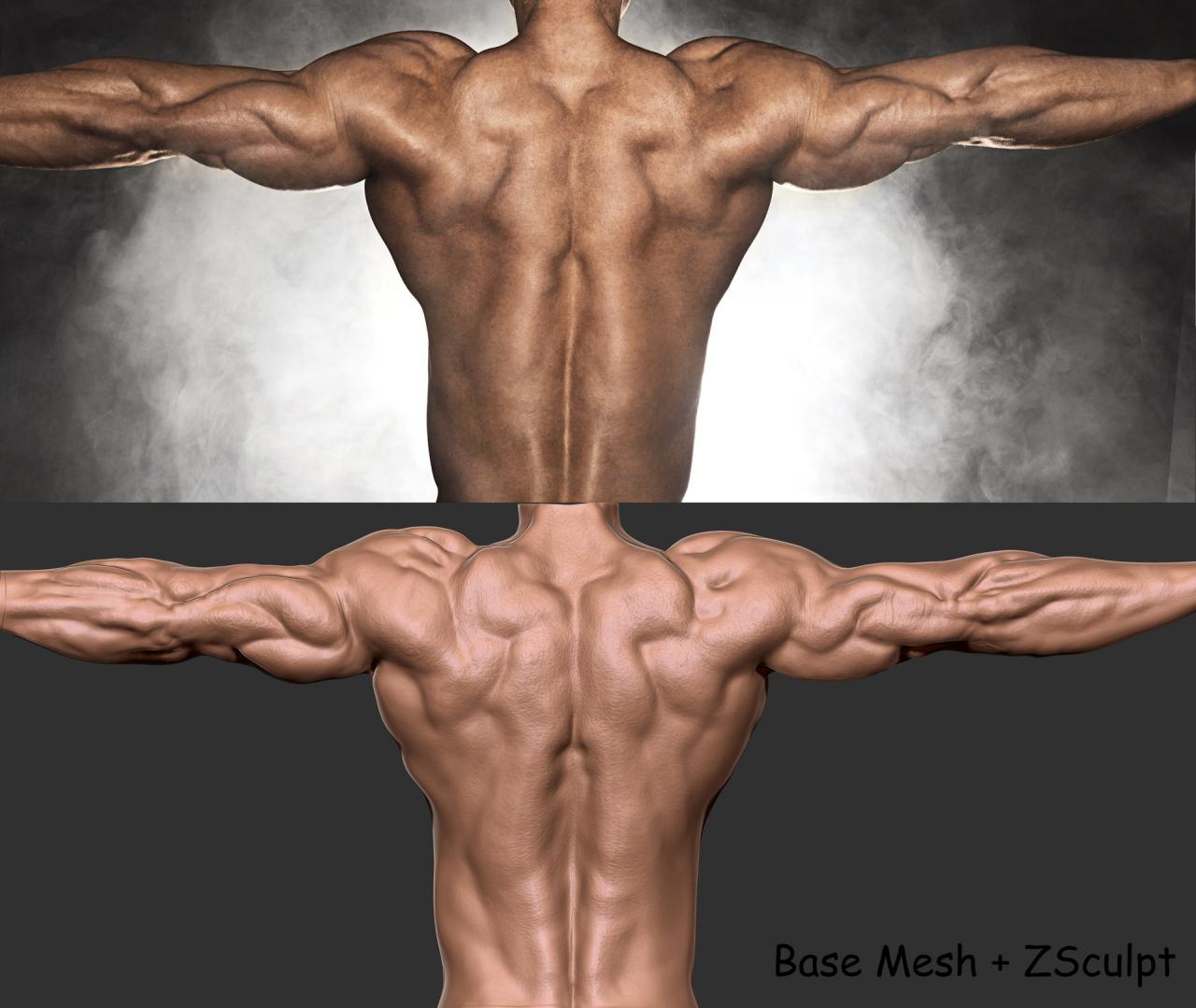
Step into the realm of back muscles, the unsung heroes of our bodies. From maintaining posture to powering athletic feats, these muscles play a pivotal role in our daily lives. Join us as we delve into the anatomy, exercises, importance, and care of these essential muscle groups.
Back muscles, the guardians of our spine, encompass a symphony of muscle groups. Each muscle, with its unique location, function, and attachments, contributes to the intricate tapestry of our musculoskeletal system.
Anatomy of Back Muscles

The back muscles are a complex group of muscles that play a vital role in maintaining posture, stability, and balance. They are divided into two main groups: the superficial muscles and the deep muscles.
The superficial muscles are located on the surface of the back and are responsible for the overall shape and movement of the back. The major superficial muscles include the trapezius, latissimus dorsi, and rhomboids.
The deep muscles are located beneath the superficial muscles and are responsible for more specific movements of the back. The major deep muscles include the erector spinae, multifidus, and rotatores.
The back muscles are innervated by the spinal nerves. The cervical nerves (C1-C8) innervate the muscles of the upper back, while the thoracic nerves (T1-T12) innervate the muscles of the middle back and the lumbar nerves (L1-L5) innervate the muscles of the lower back.
The back muscles are essential for a variety of movements, including:
- Extending the spine
- Flexing the spine
- Rotating the spine
- Abducting the shoulder
- Adducting the shoulder
Exercises for Back Muscles
There are a variety of exercises that can be used to strengthen the back muscles. Some of the most effective exercises include:
- Pull-ups
- Chin-ups
- Rows
- Deadlifts
- Back extensions
- Hyperextensions
These exercises can be performed using a variety of equipment, including dumbbells, barbells, and resistance bands. It is important to use proper form when performing these exercises to avoid injury.
In other news, experts have highlighted the connection between stiff and tight muscles and back pain. Understanding this relationship can aid in addressing back pain effectively. Additionally, a comprehensive guide to lower back exercises that can be performed at home has been compiled, providing valuable information for those seeking to alleviate back pain.
Importance of Back Muscles
Strong back muscles are essential for maintaining good posture, stability, and balance. They also help to protect the spine from injury. In addition, strong back muscles can improve athletic performance and reduce the risk of back pain.
People who engage in activities that require a lot of back strength, such as weightlifting, rowing, and swimming, need to have strong back muscles to perform these activities safely and effectively.
Stretching for Back Muscles
It is important to stretch the back muscles regularly to improve flexibility and range of motion. Some of the most effective stretches for the back muscles include:
- Child’s pose
- Cat-cow pose
- Cobra pose
- Downward-facing dog
- Hamstring stretch
- Quad stretch
These stretches can be performed daily to help improve flexibility and range of motion in the back.
Common Back Muscle Injuries
Back muscle injuries are common, especially among people who engage in activities that require a lot of back strength. Some of the most common back muscle injuries include:
- Muscle strains
- Ligament sprains
- Herniated discs
- Sciatica
These injuries can be caused by a variety of factors, including poor posture, improper lifting technique, and overuse. It is important to treat back muscle injuries promptly to prevent them from becoming chronic.
Closure: Back Muscles

In conclusion, back muscles are the foundation of a strong, balanced, and pain-free body. By understanding their anatomy, incorporating targeted exercises into our routines, and practicing proper stretching techniques, we can harness the full potential of these vital muscles. Remember, investing in back muscle health is an investment in overall well-being, allowing us to move with confidence, perform at our best, and enjoy life to the fullest.
FAQ Resource
What are the most common back muscle injuries?
Strains, sprains, and herniated discs are among the most prevalent back muscle injuries.
For those seeking heartfelt Mother’s Day wishes , numerous resources offer inspiring images and messages to express gratitude. While pregnant women may not yet have given birth, they deserve recognition for their strength and the journey they are embarking on.
The question of whether to extend Mother’s Day greetings to them is a matter of personal preference.
How can I prevent back muscle injuries?
Maintain good posture, use proper lifting techniques, and engage in regular exercise to strengthen back muscles.
Why are back muscles important for athletes?
Strong back muscles enhance stability, power, and overall athletic performance.







